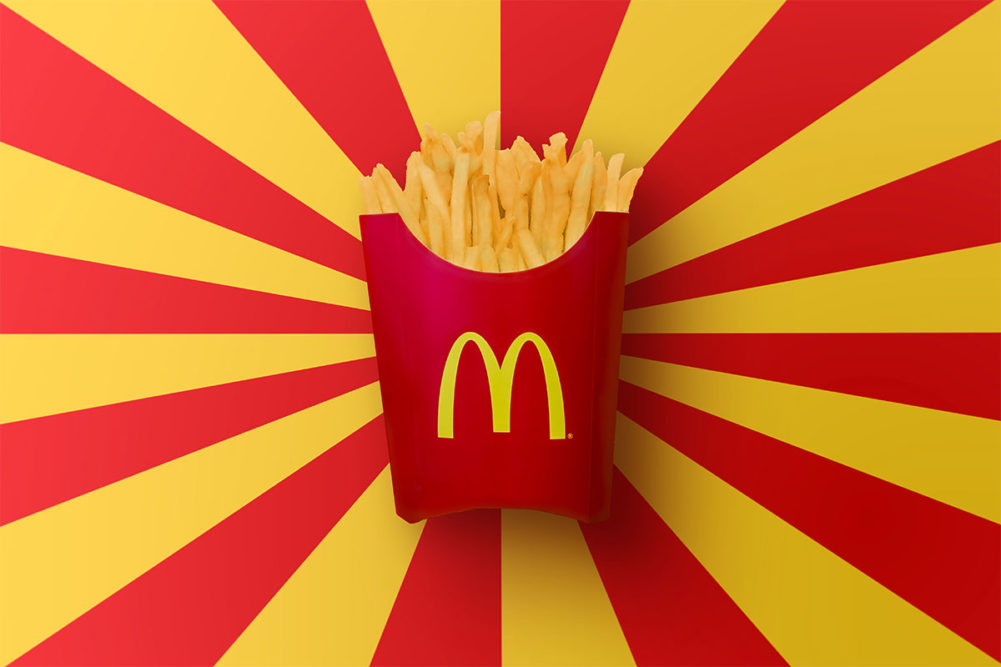CHICAGO — McDonald’s Corp. has set a goal of growing from approximately 40,000 stores today to 50,000 stores around the world by the end of 2027. While the plan appears to be a commitment to brick-and-mortar growth, it also underpins the company’s digital strategy of engaging and reaching more consumers more quickly.
“To put our development ambition into perspective, this period of restaurant expansion will be the fastest growth in the history of McDonald’s,” said Manuel J.M. Steijaert, global chief customer officer, during the company’s Dec. 6 investor day presentation. “It actually took us 33 years to reach our first 10,000 restaurants. It took us eight years to reach 20,000 restaurants. It took us seven years to reach 30,000 restaurants, but we actually reached 40,000 restaurants after 18 years in 2021. By the end of 2027 — four years from now — we expect to reach 50,000 restaurants.
“We see an incredible opportunity to grow the business by building more locations, getting us even closer to our customers.”
Running parallel to the physical growth over the next four years will be investment and scaling of McDonald’s digital ecosystem.
“We’ve accumulated one of the largest branded restaurant footprints in our industry with over 40,000 locations giving us incomparable reach in the physical world,” said Christopher J. Kempczinski, president and chief executive officer. “And in the digital world, our app is the gateway into the McDonald’s experience.
“Across 50 of our largest markets, we have had over 100 million customer registrations on our mobile app during just the last 12 months, exceeding all other restaurant brands. We have built one of the largest loyalty programs in the world. Today, we have 150 million users that have been active in the last 90 days across our top 50 markets with 70 million in China alone.”
McDonald’s loyalty system-wide sales have more than tripled during the past three years to $20 billion, said Joseph Erlinger, president of McDonald’s USA.
“By keeping our customers at the heart of our digital strategy by delivering value, however and whenever they decide to order and enjoy their McDonald’s favorites, we expect to grow our active loyalty user base to 250 million by 2027,” he said.
To reach that scale will require getting closer to consumers and personalizing offers.
“The number of our locations was our competitive advantage at McDonald’s,” Erlinger said. “In the future, data will sit alongside restaurant locations as another significant competitive advantage. It will fuel a virtuous cycle of improvements to the customer experience.
“… Loyalty provides us with the data to serve customers in a personalized and uniquely McDonald’s way. Even as we’re just starting to build out our personalization capabilities, we’re already seeing loyalty customers in the US visit with 15% greater frequency and in markets like the US and Canada spend nearly twice as much on average as non-loyalty customers.”
Erlinger added that mobile ordering is the fastest growing channel with McDonald’s customers. During the third quarter of this year alone, he said, the quick-service restaurant chain fulfilled “hundreds of millions” of mobile orders alone.
“Earlier this year, we launched ready on arrival or ROA in the United States,” he said. “ROA integrates geo-fencing technology into our mobile app. Geofencing notifies the restaurant when customers are approaching and prompts the crew to start preparing the order. It allows for more efficient and effective restaurant operations, getting our customers the food they love while reducing customer wait times. In fact, we’ve seen a 60-second reduction in wait times for customers that pick up via curbside or in the restaurant. As a result of delivering hotter, fresher food to our customers, we’ve seen significantly higher customer satisfaction score in these transactions, which we know in turn drives frequency.”
The store expansion plan also is expected to fuel growth in delivery for three reasons, said Erlinger.
“One, with over 40,000 locations and growing, we are closer to customers than any other brand,” he said. “That allows us to deliver food to our customers faster, and faster also means hotter.
“Two, because of our industry-leading delivery volumes, we attract more drivers or couriers to our restaurants, which means better driver availability. And three, we’ve negotiated better rates with our third-party ordering providers. That means we can offer lower prices when compared to products from our competitors.”
For the third quarter ended Sept. 30, McDonald’s net income totaled $2.32 billion, equal to $3.17 per share on the common stock, up 17% from $1.98 billion, or $2.68 per share, in the prior-year period.
Revenues totaled $6.69 billion, up 14% from $5.87 billion a year ago.
Global comparable sales grew 8.8%, driven by comparable sales growth across all segments. Comparable sales in the US market grew 10%, benefiting from strategic menu price increases, according to the company.



